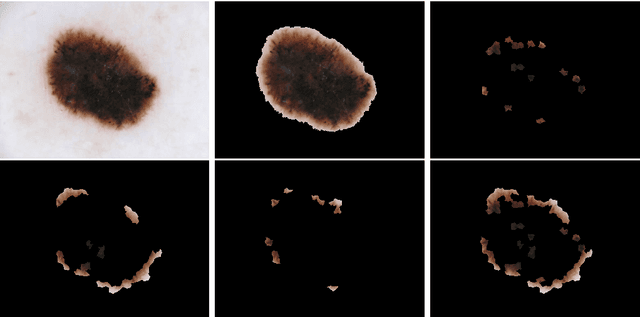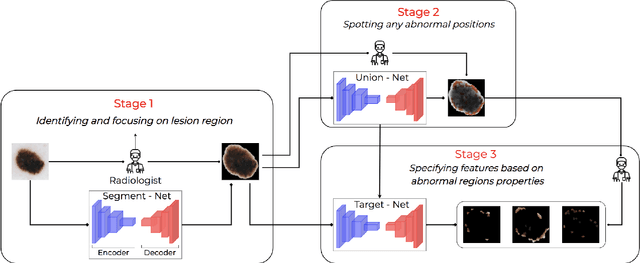Thu T. Nguyen
TATL: Task Agnostic Transfer Learning for Skin Attributes Detection
Apr 04, 2021



Abstract:Existing skin attributes detection methods usually initialize with a pre-trained Imagenet network and then fine-tune the medical target task. However, we argue that such approaches are suboptimal because medical datasets are largely different from ImageNet and often contain limited training samples. In this work, we propose Task Agnostic Transfer Learning (TATL), a novel framework motivated by dermatologists' behaviors in the skincare context. TATL learns an attribute-agnostic segmenter that detects lesion skin regions and then transfers this knowledge to a set of attribute-specific classifiers to detect each particular region's attributes. Since TATL's attribute-agnostic segmenter only detects abnormal skin regions, it enjoys ample data from all attributes, allows transferring knowledge among features, and compensates for the lack of training data from rare attributes. We extensively evaluate TATL on two popular skin attributes detection benchmarks and show that TATL outperforms state-of-the-art methods while enjoying minimal model and computational complexity. We also provide theoretical insights and explanations for why TATL works well in practice.
 Add to Chrome
Add to Chrome Add to Firefox
Add to Firefox Add to Edge
Add to Edge